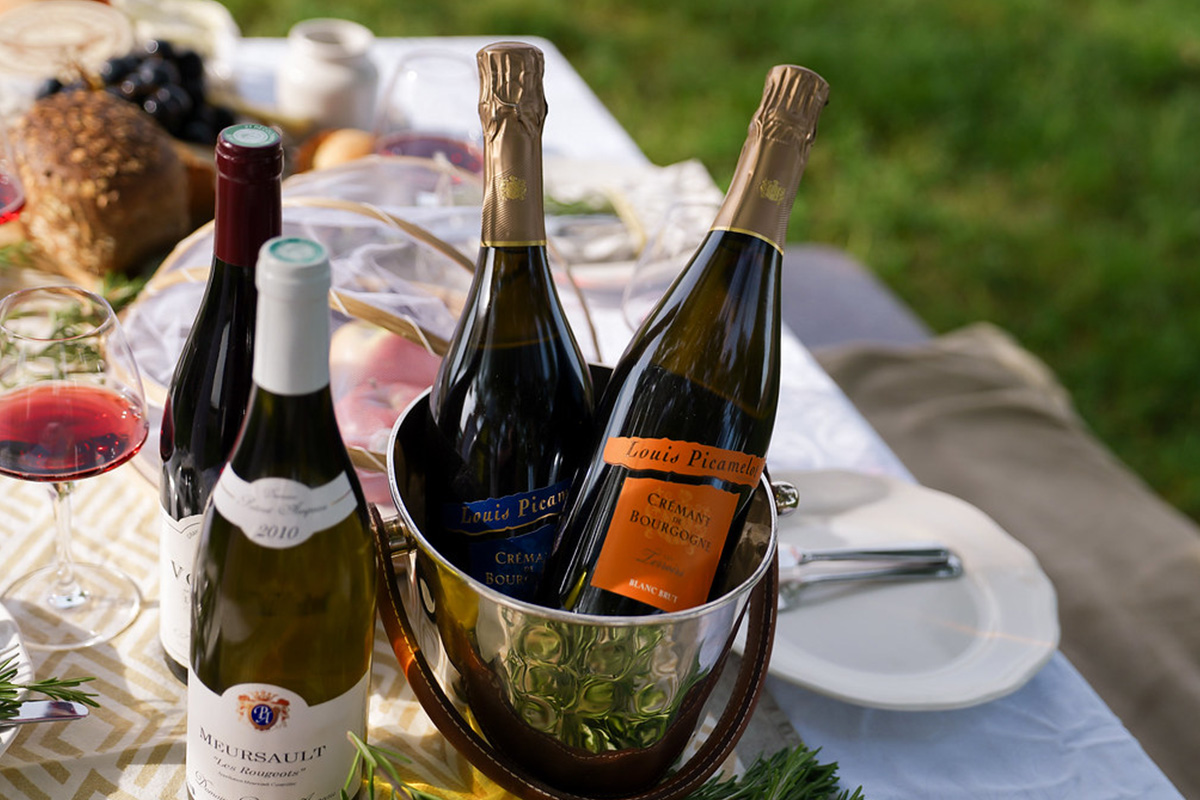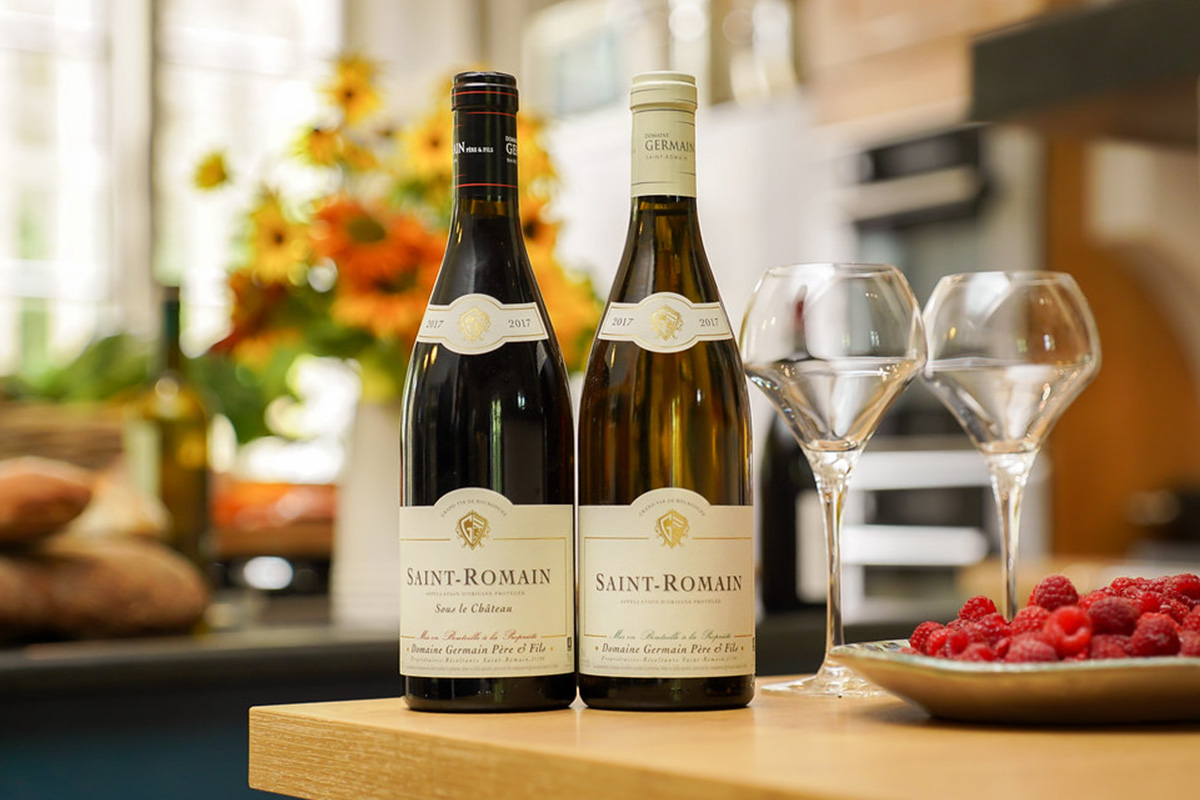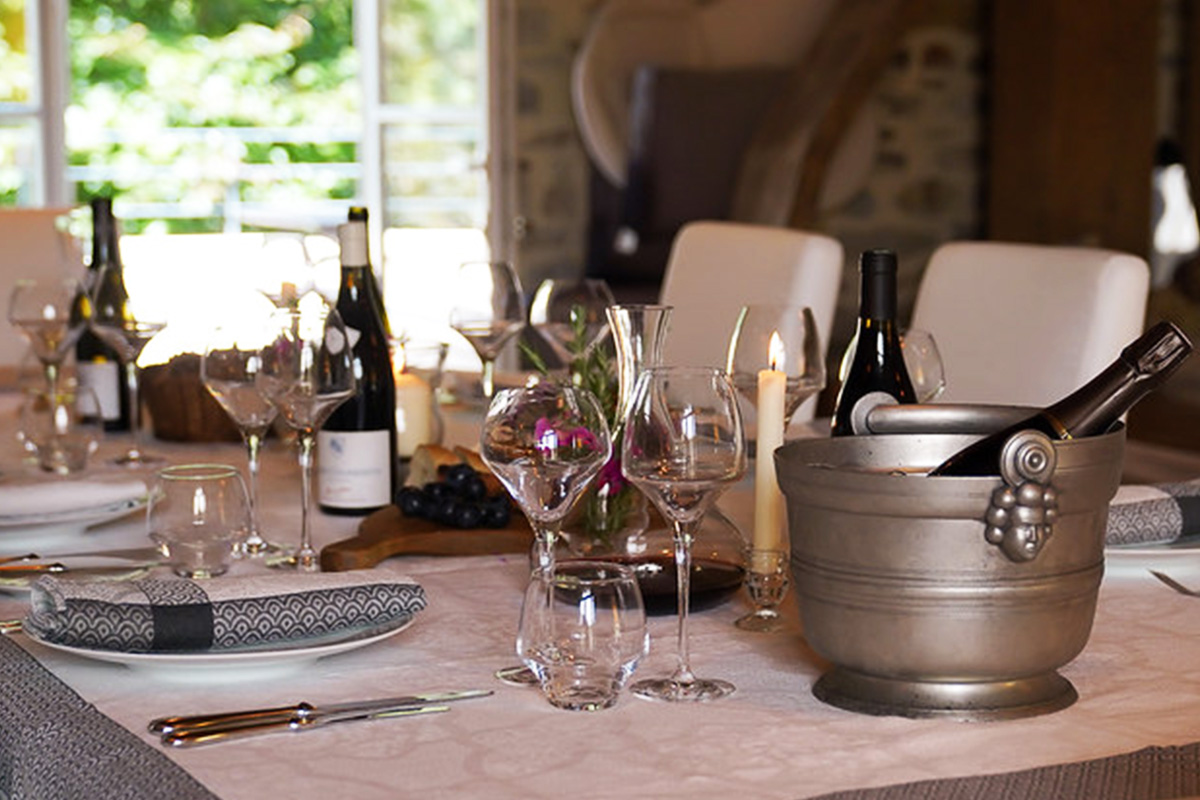View Articles by Category
The Goldilocks Principle: Finding the Right Wine Serving Temperature

The Perfect Serving Temperatures for Wines From Burgundy
The correct wine serving temperature is one of the many variables that can affect our experience when we drink wine. However, it may not be the most obvious one; you’re more likely to notice your surroundings, what you’re eating with the wine, what the glass is like, and the quality (or otherwise) of the conversation with your fellow guests.
But the correct wine serving temperature shouldn’t be overlooked. Imagine sipping warm lemonade, or cool cocoa— not only does it feel wrong, but the science working behind the scenes will mean that the taste and flavor profile isn’t what it should be, due to the temperature. When it comes to the wines of BurgundyWine.com by Elden Selections, wines of real depth and complexity, that flavor profile is particularly important.
The Science of Temperatures
Temperature is really the measurement of how fast the molecules in your wine are moving around. When a wine is warmed, the molecules move faster, entering your nose and dissipating around your palate quicker. That can mean that serving a red wine – especially a full bodied one – at a warm temperature may well make it a little overpowering, somewhat soupy, and quite alcoholic.
When you cool a wine down, certain flavors might be muted a little, but others may become more prominent, such as tannins or oak —not always a good thing, depending on your tastes. But it’s true to say that some flavors do benefit from chilling, such as juicier, fruity flavors. The right wine serving temperature for a particular wine all depends on how the chemical compounds in the wine react to the temperature around them.

The Goldilocks Principle
The sweet spot when it comes to wine serving temperature—as all afficionados of fairy tales will know—is the ‘not too hot, not too cold, but just right’ temperature. You’ll know it when you find it. Some experimentation will be needed, but that’s the joy of it, right? Putting numbers on temperatures is an inexact science and there are no hard and fast rules. The weather, glass size, age of the wine and many more factors should be taken into account. But if you’re looking for some general guidelines, try thinking of a scale from ice cold, to cold, through cellar temperature and finally to room temperature.
To be a little more specific:
- Red wine: for light red wines such as Beaujolais try to aim for a wine serving temperature of 55 60°F (around 1315°C). For more full-bodied red wines, try a temperature nearer to 60 65°F (1518°C). Use a larger, more bowl shaped glass to maximise the nose and flavor profile (and read our article on selecting the perfect Burgundy wine glass for more or on this).
- White wine: when drinking lighter, more floral whites, aim for somewhere around 4550°F (710°C). Full-bodied and more powerful white wines are best drunk at 5060°F (or around 1015°C). The narrower glasses that white wines tend to be served in are not simply for show; they serve a purpose, in that they help to reduce oxidation (how much oxygen gets to react with the wine) which keeps wines lighter and brighter for longer. The shape also funnels the aromas to your nose quicker.
- Sparkling wine: these wines, such as a good Crémant de Bourgogne, benefit from the coolest temperatures, so try them at around 4346°F (or 68°C). Different styles of sparkling wine may benefit from slight variations in temperature. For instance, lighter, fruitforward sparkling wines like Prosecco can be served at the cooler end of the spectrum, around 40°F. On the other hand, sparkling wines like vintage Champagne (which may be more complex and aged too) might be best enjoyed slightly warmer.
- Rosé wines: The ideal temperature for serving Burgundy rosé wines typically falls between 50°F and 60°F (10°C to 15°C). At these temperatures, the wine can showcase its refreshing qualities while keeping its delicate nuances. When rosé is served too cold, say below 50°F, you might find that the flavors become muted, and you don’t get some of the complex fruit notes, floral scents, or subtle acidity. On the other hand, serving it too warm, say above 60°F, can make the wine feel heavier, diminishing its refreshing character.
Getting the Right Temperature for Your Wine
The best answer for anyone wondering how to change the temperature of their wine is ‘carefully’. To cool it, you could use an ice bucket, but if you do, make sure to check the bottle often as it should only take around 15 minutes. You can buy cool sleeves for bottles, or you could splash out on a dedicated wine fridge which sets the right temperature but doesn’t contain any of the odours that your food refrigerator might.
When bringing a wine up to temperature you could decant it, and leave it at room temperature for an hour or so, depending on the temperature of your room. The size of the bottle the wine is in will also make a difference, so bear this in mind if you're drinking half bottles or Jeroboams...
Ultimately, personal preference plays a role, so it’s worth experimenting to find the wine serving temperature that you enjoy most. Serving wine at the right temperature enhances your drinking experience and lets the wine be at its best for your enjoyment.

Find Perfection in Wine and Food at Domaine De Cromey
If you’re lucky enough to find yourself at the Domaine de Cromey, the beautiful home of BurgundyWine.com by Elden Selections, you can experience the joy of drinking Burgundy wine in the heart of the region, at the temperature it was designed to be savored at, and with some of the most exquisite food of the Bourgogne region to accompany it. You'll be perfectly placed to take fascinating day trips into local towns like Beaune, Autun and Dijon, or you can taste wines in our cellar, or relax by the pool all in the bosom of beautiful Burgundy.
Learn more by going to the BurgundyWine.com blog where you can read about how sustainability and innovation make wine a leader in the drive for a circular economy, and find everything you need to know about chilling wines in summer. And have you heard about our fabulous Burgundy Wine Club? Just follow this link.